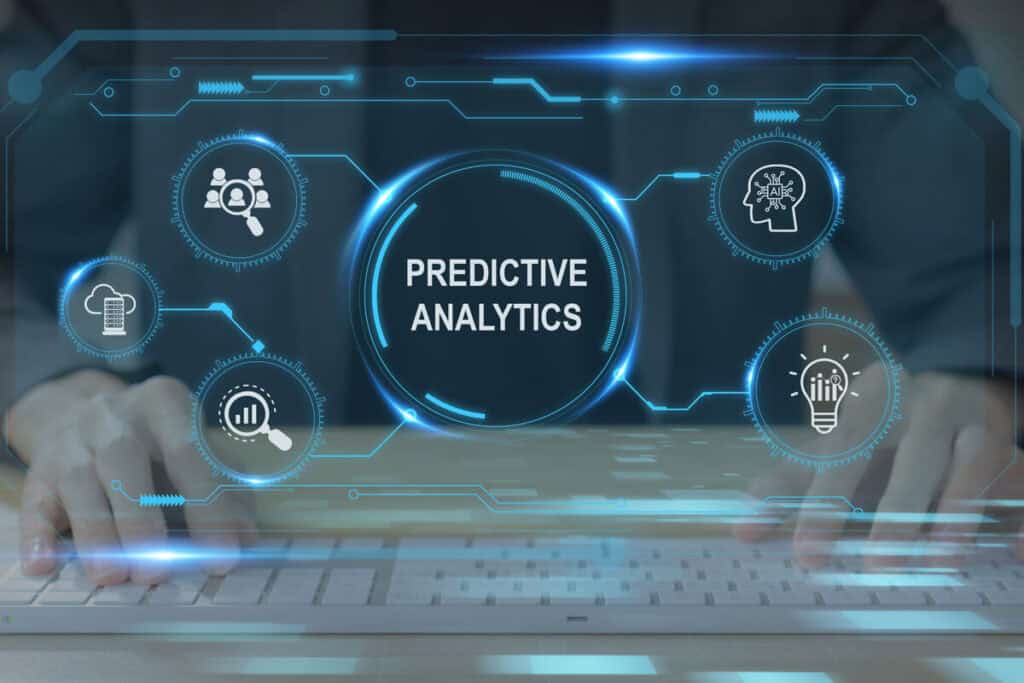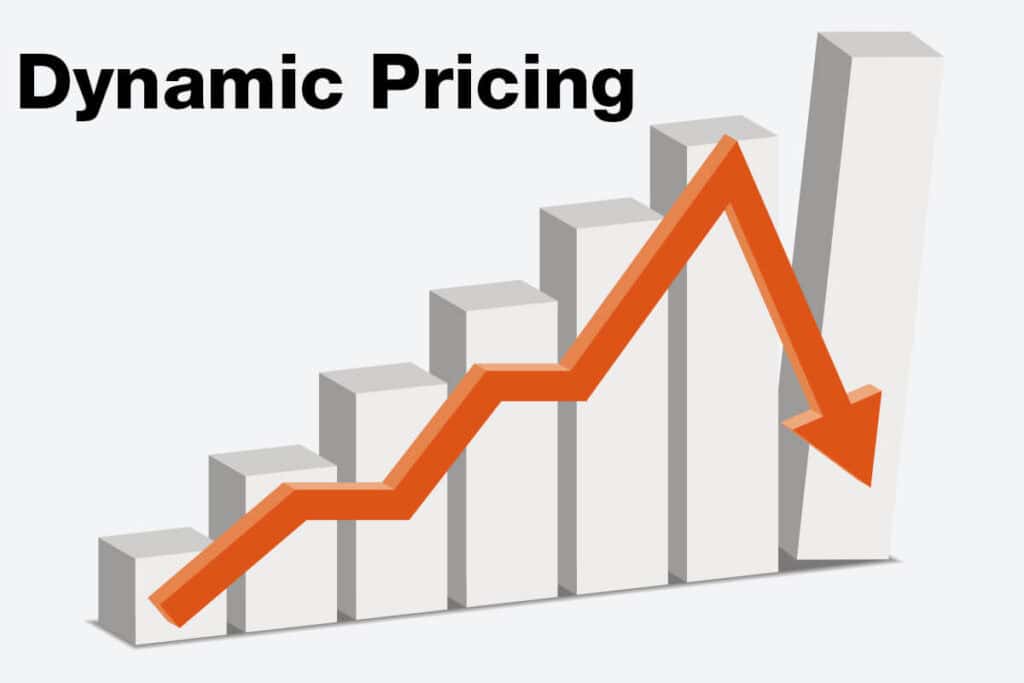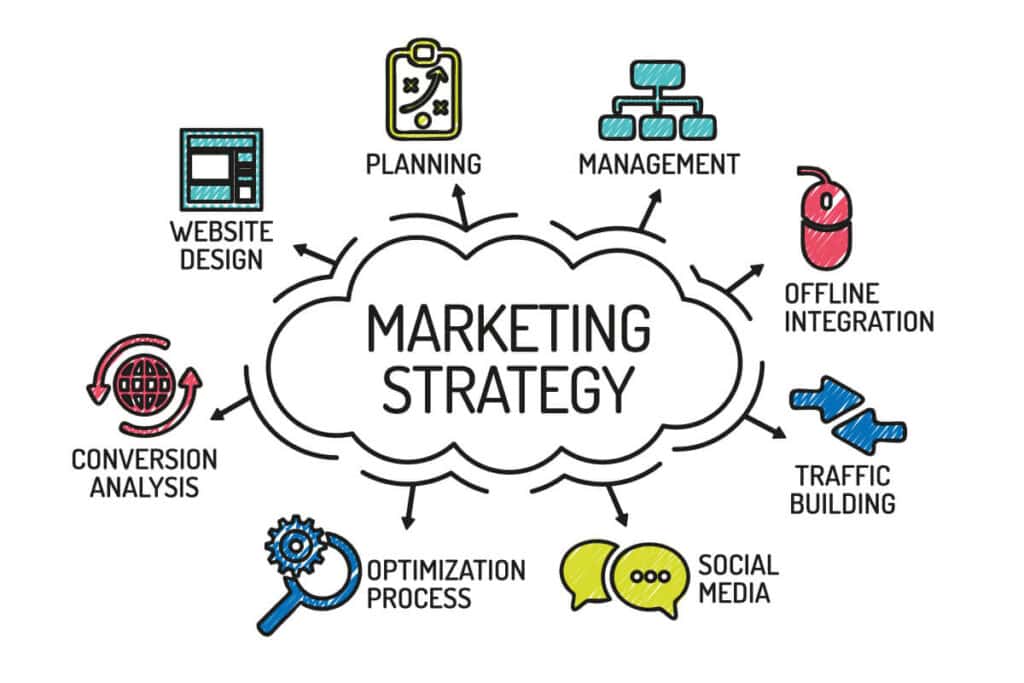Key Highlights
- Retail business intelligence solutions provide actionable insights that can help businesses maximize profits by improving customer satisfaction, optimizing inventory management, and informing marketing strategies.
- These solutions utilize data visualization techniques to present complex data in a clear and understandable format, enabling decision-makers to make better informed choices.
- Predictive analytics is a key component of retail business intelligence, allowing businesses to forecast customer behavior and market trends, by allowing them to make more proactive decisions to stay ahead of the competition.
- Retail business intelligence solutions can also help improve customer service through the integration of AI technologies such as chatbots, which improve customer engagement and provide personalized shopping experiences.
- Effective operations and data-driven decision-making are vital in the retail industry, and retail business intelligence solutions can help businesses streamline their operations, optimize supply chains, and implement dynamic pricing strategies for maximum profitability.
Table of Contents
Toggle
Introduction
Retail businesses operate in a highly competitive environment, where staying ahead of the competition is crucial for success. To achieve this, businesses need to make informed decisions based on accurate data and actionable insights. This is where retail business intelligence adds value.
Retail business intelligence solutions help organizations collect, process, and analyze retail-specific data to provide valuable insights that can help to maximize profits. These solutions utilize advanced analytics and data visualization techniques to transform raw data into meaningful information that decision-makers can use to drive business growth.
By using retail business intelligence solutions helps businesses to gain a deeper understanding of customer behavior, optimize inventory, inform marketing strategies, and make confident data-driven decisions. This enables them to improve customer satisfaction, increase sales, reduce costs, and ultimately maximize profits.

The Role of Business Intelligence in Retail Transformation
Retail operations have advanced greatly in recent years. I used to work in the HQ of Top Shop on Sundays. We read all the barcodes from the paper tags ripped from garments that were sold for the past week to produce management reports that were used to inform what was needed to be shipped to the 100 or so stored the following week. In recent years, I ran a webinar for Dynatrace with a guest speaker from REI who was able to use website performance data that showed a direct correlation between website performance and the probability of a visit to a physical store.
Business intelligence plays a crucial roe in revolutionizing the retail sector, which is increasingly data-focused. By harnessing analytics, retailers can gain actionable insights and make informed decisions to achieve strategic goals. Better understanding customer behavior translates into better product recommendations and increased profits.
Data analytics in retail provides valuable insights into customer behavior, market trends, and operational efficiency. By analyzing customer data, businesses can personalize marketing campaigns, improve customer satisfaction, and foster loyalty, resulting in higher sales.
Additionally, data analytics optimizes inventory management by forecasting demand, identifying slow-moving products, and improving supply chain efficiency. This reduces costs, prevents stockouts, and boosts profits.
Moreover, data analytics uncovers new sales opportunities and refines pricing strategies based on market trends and customer preferences. This drives profitability and increases competitiveness.

Integrating AI for Enhanced Inventory Management
AI technologies have revolutionized inventory management in the retail industry. By integrating AI into their inventory management systems, retailers can optimize their inventory levels, minimize stockouts, and reduce carrying costs.
AI algorithms can analyze historical sales data, current trends, and external factors to forecast demand more accurately. This allows retailers to maintain optimal inventory levels, ensuring products are available when customers need them while avoiding excess inventory that ties up capital.
AI can also improve the accuracy of demand forecasting by considering a wide range of variables such as seasonality, promotions, and customer behavior. This enables retailers to make data-driven decisions regarding procurement, production, and replenishment. AI can automate inventory replenishment processes by automatically generating purchase orders when stock levels reach predetermined thresholds. This reduces manual intervention, streamlines operations, and improves efficiency.
AI can also help retailers identify slow-moving or obsolete inventory and recommend appropriate actions such as markdowns, promotions, or inventory transfers. This prevents inventory from becoming stagnant and allows retailers to maximize revenue.

Leveraging Predictive Analytics for Customer Behavior Insights
Predictive analytics is a powerful tool that can provide retailers with valuable insights into customer behavior. By analyzing historical data and using algorithms to identify patterns, retailers can predict future customer behavior and make informed decisions to improve customer satisfaction and drive sales.
Predictive analytics can help retailers understand customer preferences, buying patterns, and lifetime value. By segmenting customers based on their behavior, retailers can tailor marketing campaigns, offer personalized recommendations, and provide a more engaging and shopping experience. Predictive analytics can help retailers optimize pricing strategies by analyzing market trends, competitor prices, and customer sensitivities. By predicting demand and price elasticity, retailers can adjust prices to maximize profitability and gain a competitive edge.
Advancing Customer Service through AI Technologies
AI technologies are revolutionizing customer service in the retail industry, enhancing the overall shopping experience. By leveraging AI-powered chatbots, businesses can significantly improve customer engagement and satisfaction levels. These chatbots provide instant assistance and personalized recommendations based on customer preferences, leading to a more efficient and tailored customer service approach. Additionally, AI enables retail companies to offer personalized shopping experiences through advanced machine learning algorithms, further increasing repeat business.

The Impact of Chatbots on Customer Engagement
Chatbots have a significant impact on customer engagement in the retail industry. By providing instant personalized responses to customer queries, chatbots can improve the overall customer experience.
Chatbots can handle a high volume of customer interactions simultaneously, reducing wait times and providing quick solutions to customer problems. They can assist customers with product recommendations, answer frequently asked questions, and guide them through the purchasing process.
Customers appreciate the convenience and efficiency of interacting with chatbots. They can get immediate responses to their inquiries, regardless of the time of day. This leads to increased customer satisfaction and engagement. In addition to improving customer service, chatbots also provide valuable insights into customer behavior.
Personalized Shopping Experiences with AI
AI is reshaping retail by personalizing shopping experiences. Retailers use AI tools to analyze customer data for tailored recommendations. AI examines purchase history, browsing behavior, and demographics to create detailed profiles. This enables targeted suggestions based on preferences and trends.
Recommendation engines powered by AI suggest products based on past purchases, similar profiles, and popular items, enhancing the shopping experience. Personalization boosts customer satisfaction, loyalty, and sales by offering more relevant suggestions.
AI empowers retailers to understand customer preferences, enhance the shopping experience, and increase profits.

Effective Operations and Data-Driven Decision Making
Retail businesses need effective operations and data-driven decision-making to succeed. Retailers can use business intelligence solutions to analyze data, gain insights, and make better informed decisions. Data-driven decision-making involves the use of analytics tools to identify trends and market opportunities, optimize operations, and increase profitability. For instance, retailers can enhance their supply chain by analyzing inventory levels and demand patterns, leading to cost reductions and improved product delivery. By utilizing data mining and data science to personalize marketing campaigns and pricing strategies based on customer preferences, retailers can improve customer engagement and satisfaction levels through effective data management. These are just some of the major benefits that retailers can enjoy through the use of business intelligence in the retail industry.
Lean Supply Chains with Intelligent Solutions
Lean supply chains are essential for retail businesses to optimize their operations and improve efficiency. By leveraging intelligent solutions and retail business intelligence, retailers can streamline their supply chain processes and reduce costs.
Intelligent solutions can help retailers optimize inventory levels by analyzing demand patterns, sales data, and customer preferences. By ensuring the right products are available at the right time and in the right quantities, retailers can minimize stockouts and overstock situations, reducing inventory holding costs.
Intelligent solutions also enable retailers to improve their supplier management by analyzing supplier performance, delivery times, and quality metrics. This allows retailers to identify the most reliable suppliers and build stronger partnerships that contribute to the efficiency of the supply chain.

Dynamic Pricing Strategies for Maximum Profitability
Dynamic pricing strategies play a crucial role in maximizing profitability for retail businesses. By leveraging market trends and customer behavior data, retailers can adjust prices in real-time to optimize revenue and profit.
Dynamic pricing involves setting prices based on factors such as demand, competition, and customer preferences. By analyzing market trends and customer behavior, retailers can identify pricing opportunities and adjust prices accordingly. For example, retailers can use dynamic pricing strategies to offer discounts during off-peak hours or to match competitor prices. By adjusting prices based on demand and competition, retailers can maximize sales and profit margins.
Dynamic pricing strategies also allow retailers to personalize prices based on customer profiles and preferences. By offering personalized discounts or promotions, retailers can enhance the customer experience and increase customer loyalty.

Marketing Strategies Based On Data
Marketing strategies based on data analytics are essential for retail businesses to stay competitive and drive customer engagement. By leveraging customer data and analytics tools, retailers can create targeted marketing campaigns that resonate with their customers. Data analytics allows retailers to gain insights into customer behavior, preferences, and purchasing patterns.
By analyzing this data, retailers can identify customer segments, develop customer personas, and tailor marketing messages and promotions to each segment. For example, retailers can use data analytics to identify the most profitable customer segments and target them with personalized offers. Also, retailers can understand the customer journey and create marketing campaigns that meet the specific needs and preferences of each customer segment, including analyzing data collected from various sources such as web browsers.
Data analytics also enable retailers to track the effectiveness of their marketing strategies and optimize their campaigns in real-time. By analyzing campaign performance metrics, retailers can make data-driven decisions and adjust their marketing efforts to maximize ROI.
Crafting Personalized Marketing Campaigns
Crafting personalized marketing campaigns is essential for retail businesses to engage customers and drive customer retention. By leveraging customer data and social media platforms, retailers can create targeted and personalized marketing messages.
Personalized marketing campaigns involve tailoring marketing messages and offers to individual customers based on their preferences, behavior, and purchase history. By analyzing customer data, retailers can understand individual customer preferences and deliver relevant and timely marketing messages.
Social media platforms provide retailers with a powerful tool to reach and engage customers. By leveraging social media data and analytics, retailers can identify customer segments, understand their interests, and create personalized marketing campaigns that resonate with each segment.
Enhancing Customer Loyalty through Targeted Promotions
Increasing customer loyalty is crucial for retail businesses to drive customer retention and maximize profits. By leveraging targeted promotions and personalized offers, retailers can create a strong bond with their customers and foster long-term loyalty.
Targeted promotions involve delivering tailored offers and discounts to specific customer segments based on their preferences, behavior, and purchase history. By analyzing customer data, retailers can identify customer segments that are more likely to respond positively to promotions and create targeted campaigns to engage them.

Benefits of Retail Business Intelligence
ChatGPT responds to human prompts and its output quality relies on prompt quality. Good prompts yield accurate responses and improve model performance.
BI solutions benefit the retail sector by providing insights into operations, customers, and market trends. Retailers can make data-driven decisions, optimize operations, and gain a competitive edge through targeted marketing campaigns.

Boosting Sales with Data-Driven Insights
Analyzing sales data reveals trends and growth opportunities. Better understanding customer preferences leads to tailored product offerings that can boosts sales. Pricing strategies can be optimized by analyzing market trends and competitor prices. Customer engagement improves with personalized marketing messages and offers. Leveraging data-driven insights enhances the customer experience and drives sales.
Reducing Costs and Improving Margins
Reducing costs and improving margins are key objectives for retail businesses. By leveraging business intelligence solutions, retailers can identify cost-saving opportunities, improve operational efficiency, and increase profit margins.
One way retailers can reduce costs is by optimizing inventory levels. By analyzing sales data, demand patterns, and customer behavior, retailers can ensure they have the right products in the right quantities. Retailers can also improve operational efficiency by analyzing data on supply chain performance, sales performance, and customer engagement. By identifying bottlenecks, inefficiencies, and areas for improvement, retailers can streamline their operations and reduce costs.

Key Features of Effective Retail BI Solutions
Retail BI solutions enable retailers to utilize data analytics for valuable insights. They integrate customer, sales, and inventory data for analysis, including big data. Visualizations are presented through interactive dashboards and reports. Advanced tools provide predictive analytics and machine learning for forecasting demand and making data-driven decisions. Self-service analytics empower non-technical users to make informed decisions around retail operations, specifically in regards to understanding customers, competition, and product lines.
Importance of Data Integration and Visualization
Data integration and visualization are essential components of effective retail business intelligence (BI) solutions. By integrating data from various sources and visualizing it in meaningful ways, retailers can gain valuable insights and make informed decisions.
Data integration involves bringing together data from multiple sources, such as customer data, sales data, and inventory data. By integrating these diverse data sources, retailers can create a comprehensive view of their business and enable accurate analysis.
Data visualization is the process of presenting data in visual formats, such as charts, graphs, and dashboards. By visualizing data, retailers can easily understand and analyze complex data sets, identify trends and patterns, and communicate insights effectively.
Effective business intelligence tools provide data integration and visualization capabilities that enable retailers to gain insights and make data-driven decisions.

Compliance and Security Measures
Compliance and security are vital in retail business intelligence (BI) solutions. Retailers handle sensitive customer data and must ensure secure and compliant data handling.
Effective retail BI solutions provide measures like data encryption, data masking, access controls, and secure data storage to protect customer data and ensure privacy. These solutions help retailers adhere to legal requirements, such as data protection laws and industry regulations, reducing risks.
Security measures in retail BI solutions include user authentication, data encryption, and access controls based on roles. These safeguards limit access to authorized users only, protecting data from breaches.
Choosing the Right BI Tools for Your Retail Business
Choosing the right BI tools is vital for retailers to drive success. Evaluate needs, and prioritize ease of use, scalability, integration capabilities, and reliable technical support when selecting BI tools. User-friendly tools empower independent data analysis, scalability handles large datasets, integration capabilities are essential for centralized data analysis from various sources, and reliable technical support ensures a seamless experience.
Comparing Top BI Tools: Pros and Cons
When choosing business intelligence (BI) tools for a retail business, it is essential to evaluate the pros and cons of different options. Here is a comparison of some top BI tools in the market:
|
BI Tool |
Pros |
Cons |
|
Microsoft Power BI |
– User-friendly interface and easy to learn – Robust integration capabilities – Strong data visualization capabilities – Affordable pricing |
– Limited advanced analytics features – Limited scalability for large datasets |
|
Azure Synapse Analytics |
– Native integration with Azure ecosystem – Scalable for handling large datasets – Advanced analytics capabilities – Strong security features |
– Steeper learning curve for non-technical users – Higher cost compared to some other options |
|
Amazon Redshift |
– Scalable for handling large datasets – Native integration with AWS ecosystem – Advanced analytics capabilities – Flexible pricing options |
– Higher cost compared to some other options – Requires technical expertise for setup and management |
|
Tableau |
– Robust data visualization capabilities – User-friendly interface – Strong community support – Advanced analytics capabilities |
– Higher cost compared to some other options – Limited data integration capabilities |
|
Google Data Studio |
– User-friendly interface and easy to use – Native integration with Google ecosystem – Affordable pricing – Good for basic reporting and visualization |
– Limited advanced analytics features – Limited scalability for large datasets – Limited data source integration options |
When comparing BI tools, it is important to consider factors such as user-friendliness, integration capabilities, scalability, advanced analytics features, and technical support. Choosing the right BI tool depends on the specific needs of the retail business and the resources available for implementation and ongoing support.
Integration Considerations for Retail Environments
Integration is essential for implementing BI solutions in retail. Retailers need to integrate multiple systems and data sources for effective analysis and decision-making. System compatibility is crucial, especially with CRM, POS, and inventory management systems. Seamless integration of BI solutions provides a comprehensive view of data for enhanced inventory management, leading to improved turnover, reduced costs, better stock control, and efficient management of new stores across locations and online sales analysis. Prioritizing effective inventory management maximizes profits and operational efficiency.
Smooth data flow between systems is vital for accurate, real-time data analysis. BI solutions should have robust data integration capabilities to handle large volumes of data effectively. Integration with external data sources like market data and third-party providers enables retailers to analyze market trends and competitor data. Coupling best-of-breed data management from the likes of Actian Data Platform with BI solutions such as Looker and Tableau provides the benefit of great visualizations, powerful data integration, and fast query responses.
Conclusion
Business intelligence in the retail sector is a game-changer, offering insights that drive profitability and customer satisfaction. By integrating AI for inventory management and predictive analytics for understanding customer behavior, retailers can enhance service delivery. AI technologies like chatbots elevate customer engagement, while personalized marketing campaigns and dynamic pricing strategies boost sales. Leveraging data-driven decision-making ensures lean supply chains and improved margins. The benefits of BI extend to reducing costs and crafting targeted promotions for enhanced customer loyalty. Choose the right BI tools wisely to revolutionize your retail business operations.

Frequently Asked Questions
How Can Retailers Start Implementing BI?
Retailers can start implementing business intelligence (BI) by first defining clear objectives and identifying the key areas where data analysis can add value. It is essential to involve business users in the process to ensure that the BI solution meets their specific needs and enables them to make informed decisions based on data.
What Are the Key Metrics BI Can Help Improve?
Business intelligence (BI) can help improve a wide range of key metrics in retail, including sales performance, customer satisfaction, inventory management, and marketing campaign effectiveness. By analyzing data and gaining insights, retailers can identify opportunities for improvement and optimize their operations.





